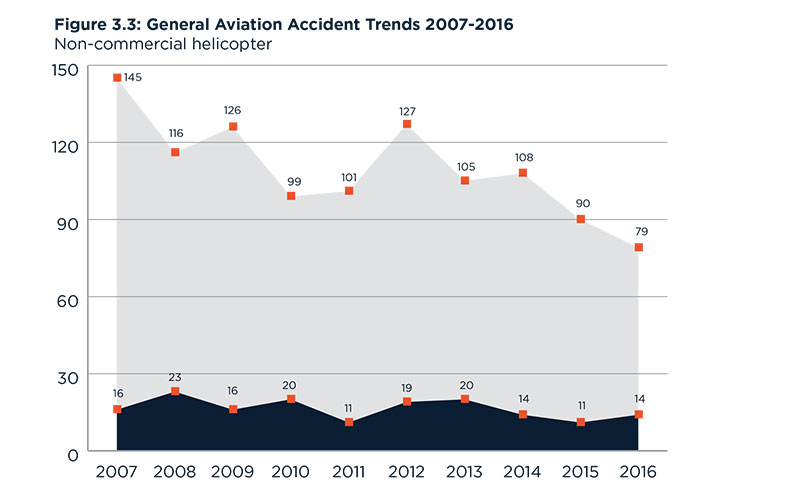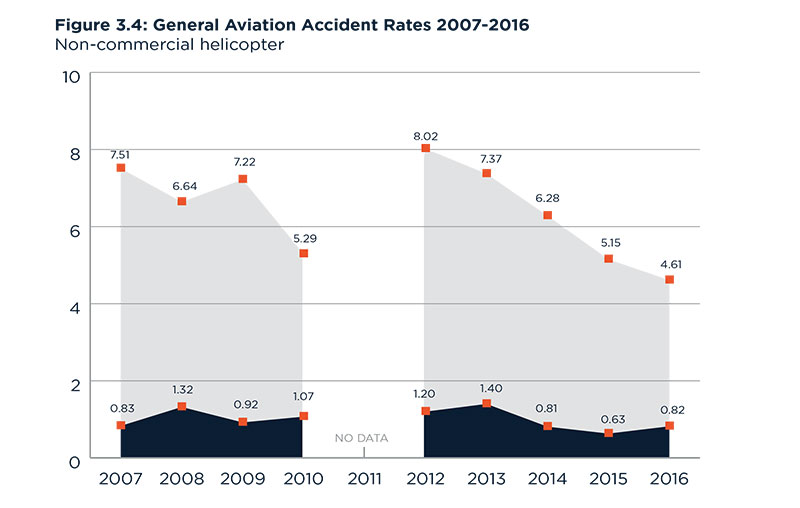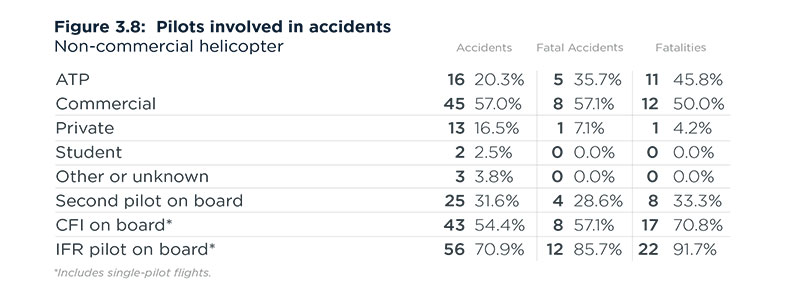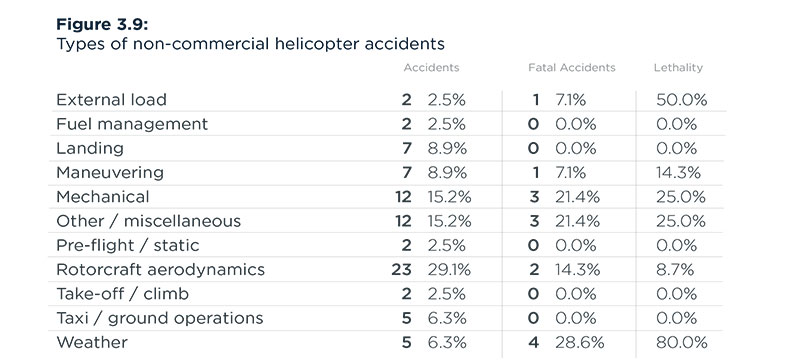Non-Commercial Helicopter
Non-commercial helicopter total accidents continued to decline to a 10-year low with 79 accidents, 14 of which were fatal (Figure 3.1). Eighty-five percent of the accidents were pilot-related with 15 percent mechanical-related (Figure 3.2). While fatal accidents increased—ending a two-year trend—the increase was minimal with 14 fatal accidents in 2016, up from 11 in 2015 (Figure 3.3).
Overall, non-commercial helicopter accident rates have continued a four-year decrease reaching a 10-year low of 4.61 accidents per 100,000 flight hours (Figure 3.4). The fatal accident rate has increased slightly in 2016 with 0.82 fatal accidents per 100,000 flight hours, up from 0.63 in 2015.
Single-engine piston helicopters had the majority of total accidents. Single-engine turbine had the majority of fatal accidents (Figure 3.5). The majority of accidents (91 %) occurred during day VMC conditions (Figure 3.7) on personal flights (Figure 3.6) by commercial pilots (Figure 3.8).
Rotorcraft aerodynamics (23 accidents) were the largest cause of non-commercial helicopter accidents (Figure 3.9). Weather accidents had the highest amount of fatal accidents (4) and were the most lethal (80 %).








